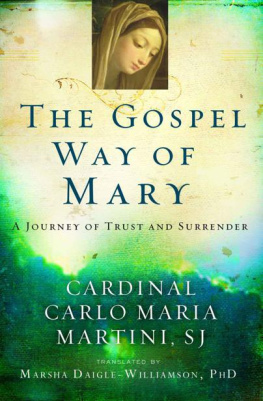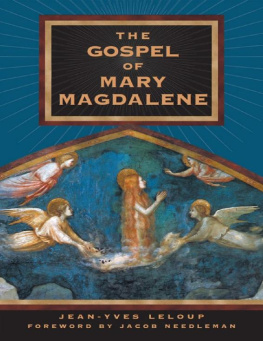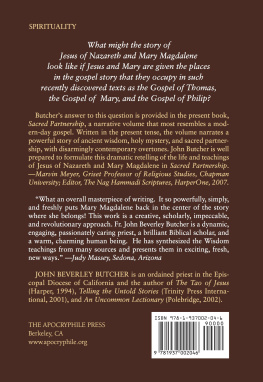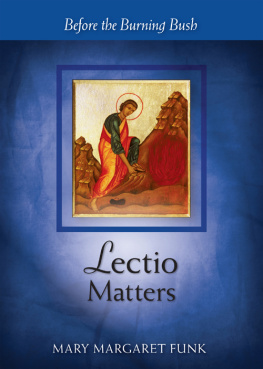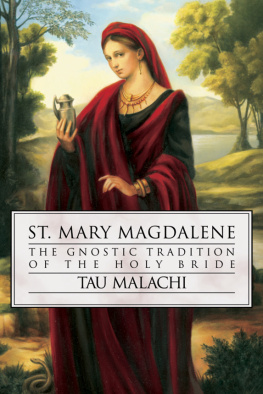T HE G OSPEL
W AY OF M ARY
A J OURNEY OF
T RUST AND S URRENDER
T HE G OSPEL
W AY OF M ARY
A J OURNEY OF T RUST
AND S URRENDER
C ARDINAL C ARLO M ARIA M ARTINI , SJ
T RANSLATED BY
M ARSHA D AIGLE - W ILLIAMSON , P H D

Originally published in Italian by Ancora Editrice, Milan, Italy as
Il Vangelo di Maria, copyright 2008 Ancora S.r.l.
English translation copyright 2011 The Word Among Us Press
All rights reserved
Published by The Word Among Us Press
7115 Guilford Road
Frederick, Maryland 21704
www.wau.org
15 14 13 12 11 1 2 3 4 5
ISBN: 978-1-59325-184-0
eISBN: 978-1-59325-412-4
Unless otherwise noted, Scripture passages contained herein are taken from the Revised Standard Version Bible: Catholic Edition, copyright 1965 and 1966 by the Division of Christian Education of the National Council of the Churches of Christ in the USA. All rights reserved. Used with permission.
Cover design by John Hamilton Design
Photo credit: Guido Reni, (1575-1642)
Adoration of the Shepherds.
Pushkin Museum of Fine Arts, Moscow, Russia
Photo Credit: Scala/Art Resource, NY
No part of this publication may be reproduced, stored in a retrieval system, or transmitted in any form or by any meanselectronic, mechanical, photocopy, recording, or any otherexcept for brief quotations in printed reviews, without the prior permission of the author and publisher.
Made and printed in the United States of America
Library of Congress Control Number: 2011921669
T ABLE OF C ONTENTS
F OREWORD
The Scripture passages that speak of Mary, the mother of Jesus, are very familiar to us. No doubt we have read many times Lukes description of the annunciation and the visitation or the search for Jesus in the temple. Sometimes we may wish that there were more passages in the gospels about Mary. We love her as our mother, and yet we want to know more about her. What was she thinking and feeling during the amazing events of her life?
In this book, Cardinal Carlo Martini does us a great service by taking those very familiar but all-too-short gospel passages about Mary and giving us food for thoughtabout Our Lady and about ourselves. Martini, a renowned Scripture scholar at the Pontifical Biblical Institute in Jerusalem and the retired archbishop of Milan, has the rare gift of combining biblical knowledge with a deep pastoral sense of our needs and the needs of the church. Thus, he leads us step-by-step from the words of each passage into insightful meditations that help us to ponder our own hearts. Are we following the gospel wayMarys way? Are we on a journey of trust and surrenderultimately the only journey to Jesus?
Martinis meditations use the ancient method of lectio divina, or prayer reading of Scripture, a practice that Pope Benedict XVI has urged all Christians to take up in his 2010 apostolic exhortation Verbum Domini. For those who wonder how lectio works or whether their own attempts to prayerfully read Scripture are adequate, Martini is a reassuring guide. Just as the ancient monks did, Martini takes the Scriptures in small bites, mulling over the words and mining them for the treasures they contain. He shows us by example how to slow down, take a few words from the Scriptures, and sit with them in the presence of the Lord.
The chapters in this book are taken from talks or chapters from other books written by Martini in Italian. They are presented here in English for the first time. In addition to the four biblical meditations, the book features three pastoral reflections about Mary. These last chapters are addressed especially to priests, but for priest and layperson alike, they illuminate how we can enjoy a profound, affective relationship with the Mother of God that will bear fruit in our lives and guide others to true Marian devotion.
St. Bernard of Clairvaux said that Scripture is like food: It is sweeter than honey and should be chewed so as not to miss out on its delicious flavor. In The Gospel Way of Mary, Martini helps us to chew on the Scriptures and then to meditate on Marys role in our lives. May his words lead us into a deeper relationship with the Mother of God, one that brings sweetness and joy to our lives.
The Word Among Us Press
C HAPTER 1

T HE S ERVANT OF THE L ORD
When I reflect on the gospel portrayal of the annunciation, the first thing I experience is a desire to be silent.
In fact, I have a certain fear in speaking about it, somewhat like Moses when he was afraid of looking at the burning bush. At first he approached it with a certain curiosityas one church father writes, curiosus desiderans introirebut then he covered his face with his garment for fear of seeing the Lord.
It is the same feeling I have now because the annunciation is like a burning bush. Everything is contained in this mystery.
Mary, we do not know how to speak about you, so please speak to us yourself. We are aware that somehow the mystery of the annunciation is linked to the mystery of the cross: This first mystery explains the other one, this first mystery is at the root of the other one. Because you experienced the death of your Son on the cross and the infinite love of the Father for human beings, help us to understand the mysterious roots of that love and to delve deeply into your yes to the will of the Father, from which everything is born, to which everything returns, and to which everything leads back.
A Threefold Consciousness
Since it would be too time-consuming to meditate on the entire passage about the annunciation, I intend to take only the final verse for our meditation: And Mary said, Behold, I am the handmaid of the Lord; let it be to me according to your word (Luke 1:38).
These words clearly signify an awareness of a relationship. Whoever identifies himself or herself as a servant defines his or her relationship to someone else.
At first this raises a problem because it seems to point to a menial slave relationship. In fact, the exact word in Greek is doul, slave. However, if we reflect on its spiritual and biblical context, we become aware that it indicates something much more tender and profound.
Marys words are actually a response to a verse from Isaiah:
Behold my servant, whom I uphold,
my chosen, in whom my soul delights. (Isaiah 42:1)
Our Lady was certainly nourished by this reading from the prophet Isaiah, and this verse is echoed in the first part of her response. When she says, Behold, I am the handmaid [or servant], it is a parallel to the first part of Isaiahs verse. When the angel says, You have found favor with God (Luke 1:30), it corresponds to the second part of this verse.
Mary defines herself in relation to God because he has decided to be in a relationship with her, to choose her; to be pleased with her, to support her.
Another beautiful parallel occurs with Isaiah 42:1b: I have put my Spirit upon him. The angel says to Mary, The Holy Spirit will come upon you (Luke 1:35).
When she responds, Behold, I am the handmaid of the Lord, Mary is placing herself in the framework of divine grace and of mission, which recalls the figure in Isaiah of the Servant of Yahweh.
Her consciousness is that of being the mysterious servant who is loved by God and chosen in advance to be filled with his Spirit.
Next page
